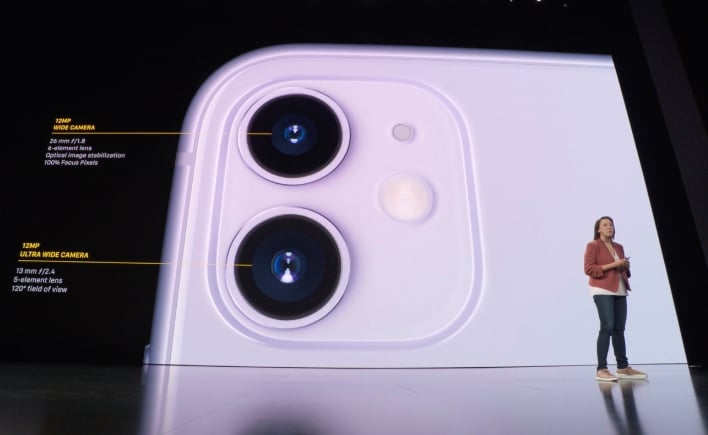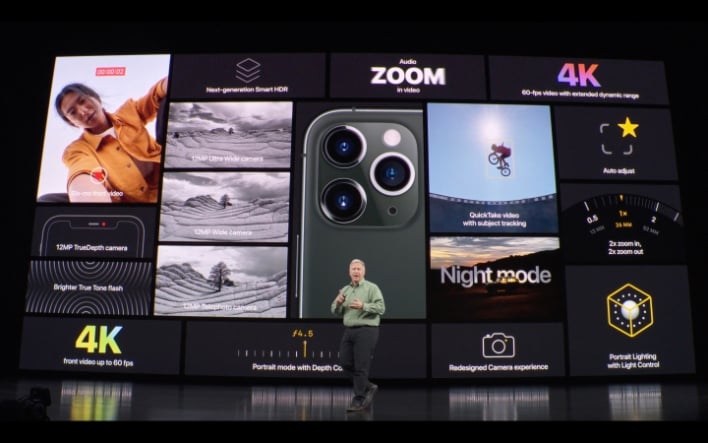Apple Debuts iPhone 11 And iPhone 11 Pro With A13 Bionic SoC, Powerful New Camera Capabilities
Let's start off with the iPhone 11, which is the least inexpensive of the bunch. It features a 6.1-inch LCD (like its predecessor) along with a revised (and faster) version of Face ID. The screen resolution remains the same (1792x868), but Apple has made some slight modifications to the panel to make improve colors and overall performance.
Inside, Apple is using a new A13 Bionic SoC, which is claimed to be the fastest processor ever in a smartphone. It uses second generation 7nm process tech composed of 8.5 million transistors. This should help improve overall performance compared to the iPhone XR, but it's not exactly like that year-old device was a slouch to begin with.
Perhaps the biggest change, however, is the addition of a second cameras on the rear of the iPhone 11, which is housed in a rather odd-looking square pod. 12MP wide cameras (f/1.8) that is joined by a 12MP ultra-wide camera (f/2.4) with a 120-degree field of view. You’ll be able to pull of some stunning landscape photographs along with incredibly cool new portrait poses with the ultra-wide angle camera. Apple has also upped the selfie FaceTime HD camera to 12MP, and it can also shoot slow-motion video. In addition to adding a third camera, Apple is also stepping up its game with a new Night Mode that kicks in automatically in low light conditions – something that Google aces with ease on its Pixel family of smartphones.
Other odds and ends that are included with the iPhone 11 include support for Wi-Fi 6, Bluetooth 5.0, and improved water/dust resistance. Apple also says that the glass on both the back and front of the device has been strengthened over the past generation.
The iPhone 11 is available priced from $699 (down from $749 for the iPhone XR).

Moving on up the family, we have the 5.8-inch iPhone 11 Pro with a new Super Retina XDR display, which succeeds the iPhone XS. While looking largely the same as its predecessor from the front, out back is a new triple-camera setup; up from dual cameras. The third camera is the new wide-angle lens found in the iPhone 11. There’s a new Deep Fusion mode that will be enabled with iOS 13.1 which will take a total of 8 images (four before you even press the shutter) to take ultra-detailed images. Apple’s Phil Schiller described it as “Computational Photography Mad Science.”
The final new model is the iPhone 11 Pro Max, which brings all of the goodness of the iPhone 11 Pro in a larger, 6.5-inch form-factor (2688x1242). For those that long big, honkin’ smartphones of the Apple persuasion, this is the one for you.
Both the iPhone 11 Pro and iPhone 11 Pro Max now come with an 18W USB-C charger in the box instead of the puny 5W charge (at long last). However, the iPhone 11 isn’t so lucky and includes the 5W charger.

And thanks to the A13 Bionic, the battery last four hours long on the iPhone 11 Pro, and five hours longer on the iPhone 11 Pro Max compared to the iPhone XS and iPhone XS Max. Pricing holds the line at $999 and $1,099 respectively for the iPhone 11 Pro and iPhone 11 Pro Max.




